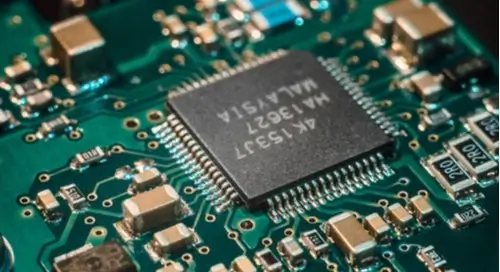In modern technology, Very Large Scale Integration (VLSI) is a cornerstone of innovation, driving the creation of smaller, faster, and more powerful electronic devices. VLSI technology enables the integration of limitless electronic components onto a single semiconductor chip.
Understanding VLSI involves delving into its fundamental principles, including transistor scaling, layout design, and advanced manufacturing processes. These elements form the backbone of VLSI technology, enabling the creation of intricate electronic systems within a compact footprint.
Embarking on a journey into the realm of Very Large Scale Integration (VLSI) promises to be a transformative endeavour, unlocking a world of innovation and opportunity. By delving into the intricacies of VLSI technology, aspiring professionals gain access to a realm where engineering prowess meets cutting-edge semiconductor design. Through rigorous VLSI Course and hands-on experience, participants can gain the perfect skills and knowledge needed to navigate the complexities of modern electronics and drive technological advancement.
Understanding VLSI: A Brief Introduction
As the tech domain evolves, the need for VLSI becomes increasingly apparent. VLSI is a must-have found in almost all high-performance computing systems, VLSI plays a pivotal role in shaping the devices we rely on daily.
Very Large Scale Integration (VLSI) marks the apex of semiconductor engineering, orchestrating the integration of myriad electronic components, chiefly transistors, onto a solitary semiconductor chip. This intricate fusion facilitates the conception of intricate electronic circuits, boasting unparalleled levels of functionality, performance, and miniaturisation, reshaping the landscape of modern technology.
At its core, VLSI hinges on several fundamental aspects:
- Transistor Scaling: VLSI leverages advancements in semiconductor fabrication processes to reduce the dimensions of individual transistors, thereby amplifying transistor densities and hastening operational speeds. This relentless pursuit of miniaturisation has been a driving force behind the exponential growth in computing power witnessed over recent decades.
- Layout Design: VLSI design encompasses the meticulous arrangement and interconnection of electronic components on a chip, optimising layout configurations for maximal performance, power efficiency, and manufacturability. Designers navigate intricate trade-offs to strike a delicate balance between competing design objectives, ensuring the creation of robust and efficient electronic systems.
- Advanced Manufacturing Processes: VLSI chips undergo a rigorous manufacturing journey characterised by a series of sophisticated fabrication processes. These processes encompass cutting-edge techniques such as photolithography, etching, and deposition, which are meticulously orchestrated to fashion intricate patterns of transistors and interconnects on silicon wafers. The precision and intricacy of these manufacturing processes underpin the reliability and performance of VLSI chips, enabling their seamless integration into a myriad of electronic devices.
By embracing these core principles, VLSI technology has empowered the development of a myriad of electronic marvels, ranging from smartphones and laptops to advanced computing infrastructure and IoT devices. The relentless pursuit of integration density, performance optimisation, and power efficiency has propelled VLSI to the forefront of technological innovation, shaping the digital landscape in profound ways.
In essence, VLSI epitomises the synergy between engineering ingenuity, mathematical precision, and manufacturing prowess. It represents a testament to human innovation, paving the way for a future defined by more innovative, more efficient, and more interconnected electronic systems. As we continue to navigate the complexities of the digital age, VLSI stands as a beacon of progress, driving innovation and shaping the course of modern technology.
The Need for VLSI in Modern Technology
VLSI technology stands as a linchpin in shaping the landscape of modern technology, influencing its trajectory in profound ways. The significance of VLSI arises from a multitude of factors:
- Increased Integration Density: VLSI facilitates the integration of an extensive array of electronic components onto a solitary chip, fostering higher performance and diminished device sizes. This heightened integration density empowers electronic devices to deliver enhanced capabilities within compact form factors, catering to the demands of an increasingly mobile and interconnected world.
- Enhanced Functionality: The consolidation of complex circuits onto a single chip enables the realisation of advanced features such as multi-core processors and high-speed communication interfaces. This amalgamation of functionalities within a confined space unleashes a new realm of possibilities, driving innovation across diverse sectors and applications.
- Cost Reduction: VLSI technology engenders economies of scale in semiconductor manufacturing, culminating in the production of more cost-effective electronic devices. By streamlining production processes and optimising resource utilisation, VLSI facilitates broader accessibility to cutting-edge technology, democratising its benefits for consumers worldwide.
- Power Efficiency: VLSI architectures prioritise power efficiency, a crucial consideration in the development of energy-conscious electronic devices. Through meticulous design methodologies and optimisation techniques, VLSI engineers strive to minimise power consumption without compromising performance, contributing to the sustainability of electronic ecosystems.
- Performance Scaling: VLSI fuels a relentless pursuit of performance optimisation, propelling continuous improvements in device capabilities. By leveraging advancements in semiconductor technology and design methodologies, VLSI drives advancements in processing speeds, data throughput, and responsiveness, empowering users with seamless and immersive computing experiences.
- Miniaturisation: VLSI breakthroughs enable the creation of smaller form factor devices, heralding a new era of portability and convenience. From wearable technology to miniature medical implants, VLSI empowers the development of innovative solutions that transcend traditional boundaries, enhancing the quality of life and driving progress in healthcare, communications, and beyond.
In essence, VLSI technology serves as the bedrock of innovation in modern electronics, transcending limitations and opening doors to a future defined by unprecedented levels of integration, functionality, and efficiency. As we navigate the complexities of the digital age, VLSI remains at the forefront of technological advancement, driving transformative change and shaping the world we inhabit.
Conclusion
In conclusion, undertaking a VLSI Course not only equips individuals with invaluable technical skills but also opens doors to enormous and exciting new career opportunities. As the demand for VLSI expertise continues to soar in industries ranging from telecommunications to healthcare, certified professionals find themselves at the forefront of innovation, accelerating progress and reshaping the technological future.




